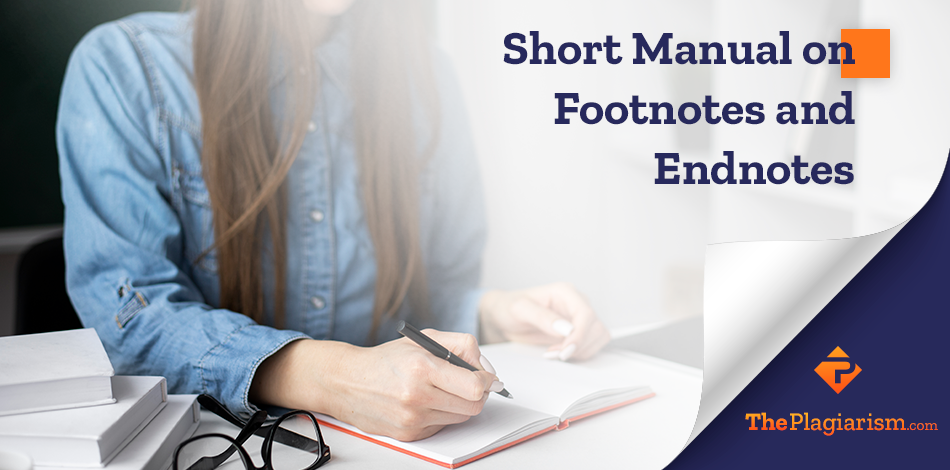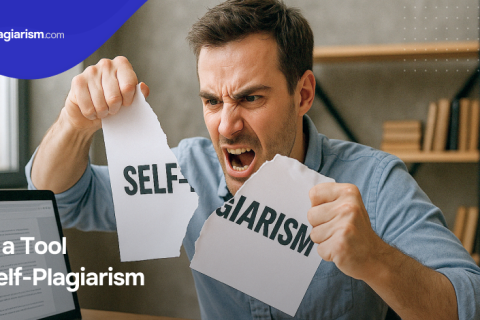How to Use Footnotes and Endnotes in Writing?
03 Mar 2023

What is footnote and endnote? Are they the same or different? Where do they appear in the text? What is the purpose of a footnote or an endnote? Are they common for academic and research papers? What are the limiting factors in their use? Which of them are accessible? Is there the right answer in choosing the style of inserting notes into the papers? You will get all the answers from our guide, but you will gain more understanding when you get more experience in writing and analyze your personal preferences as well.
Footnote vs. Endnote: Are They the Same?
Generally speaking, the main idea of using footnotes and endnotes is the same. What they are expected to do is to give a full scope of details about the used sources to the readers. What are footnotes used for? What are endnotes used for? There is a difference between footnote and endnote use.
Location
Footnotes can be found at the bottom of the page in which the author refers to the source. As for endnotes, they appear in a special section at the end of the entire text.
Flow of reading
Endnotes do not interrupt the readers’ perception of the text, while footnotes may cause distractions. So, you have to think twice when to use a footnote and when it is better to opt for an endnote in your writing.
Peculiarities of using
Endnotes are preferred for citing sources, while footnotes are appropriate for adding extensive comments on the text.
Endnote and Footnote: Advantages and Disadvantages
Which features make using footnotes effective?
- They can be located easily. Without any exceptions, footnotes are always at the end of the page.
- They are inserted without any extra effort if you need to print only particular pages. Everything is done automatically.
- It is easy to link the footnotes to the subject with the help of the note.
- The readers get instantly to the relevant ideas or quotes with the help of footnotes.
- It takes little time to trace the source or identify additional details at the end of the page.
Which features make using footnotes less helpful?
- It may be complicated to read the text if there are more than two footnotes in one page.
- A long footnote can be a distraction for the readers.
- If the page contains tables or charts, it is not easy to differentiate short footnotes and they may get lost.
Which features make using endnotes effective?
- Since a typical location for endnotes is in a specific paper section, they do not cause distractions for the readers.
- It is easier for the readers to navigate the document if the details of the sources can be found in one specific paper section.
- All notes are kept together for the readers’ convenience.
- The page layout looks pleasing as there are no clutters of details.
Which features make using endnotes less helpful?
- If readers need to get the details about the source, they need to look for them in another section. Thus, it takes their time and distracts them from the subject.
- Looking for endnotes in a long document with multiple chapters may be complicated as the readers have to keep in mind the number of endnotes and chapters.
- Readers may get irritated with endnotes as they remind them of advertising disclaimers.
Important Elements to Note:
- Bibliography implies using periods for separating the information, while footnotes require commas.
- Bibliography implies putting the last name of the author first, while footnotes use the first name first.
- The book and journal titles are italized.
- Quotation marks are used for article titles.
- Capitalization of key words in titles is a must.
How to Use Endnotes and Footnotes: Things to Remember
- In a research paper, numbering of footnotes is done consecutively. The only exception is inserting special notes on tables and charts. It is commonly accepted that Arabic figures are used to note the markings above the text. No slashes or parentheses are used. The readers perceive the text better when they can follow it without interruptions. Hence, footnotes are always placed at the end of the clause or sentence with a paraphrased citation or a direct quote. What is a footnote in an essay? Consider its value while estimating the appropriateness of introducing extra details into the text.
- Learning how to use endnotes, you need to pay special attention to the writing style preferred in your particular class. Thus, they may be placed as observations or comments with an additional list of used sources. Another option is having a list of sources with proper citing throughout the text. Being unsure about the endnote meaning and its use, you may get a consultation from your professor.
- In fact, you may check what documentation style uses footnotes and endnotes to be certain about all the academic principles. We would like to note that it is slightly an outdated strategy to use footnotes. Instead, professors opt for endnotes as they are more effective and convenient in students’ papers. Nevertheless, history, law, and other disciplines require footnotes. Ask for your professor’s advice on when to use a footnote to ensure consistent writing throughout the assignments.
Be critical in evaluating the answer to the question: What is the purpose of a footnote or an endnote? Analyze whether the information you want to add is supplementary or essential for this specific work. Think about the footnote meaning and assess its value. Is interruption in the main text adequate in this particular text? Take care about proper organization of the paper as well. If you insert too many footnotes or endnotes, the assignment will look disorganized.
If notes are included in the text, you may be worried that source details will look like plagiarism and that will make the originality score really poor. However, using ThePlagiarism.com, you will be sure that only the actual text is checked for plagiarism and notes are highlighted as details which are original. Get more experience while practicing different style of writing and referencing.
We hope you will gain an insight into effective citing and making all papers appealing for the readers with the help of our advice and recommendations.






